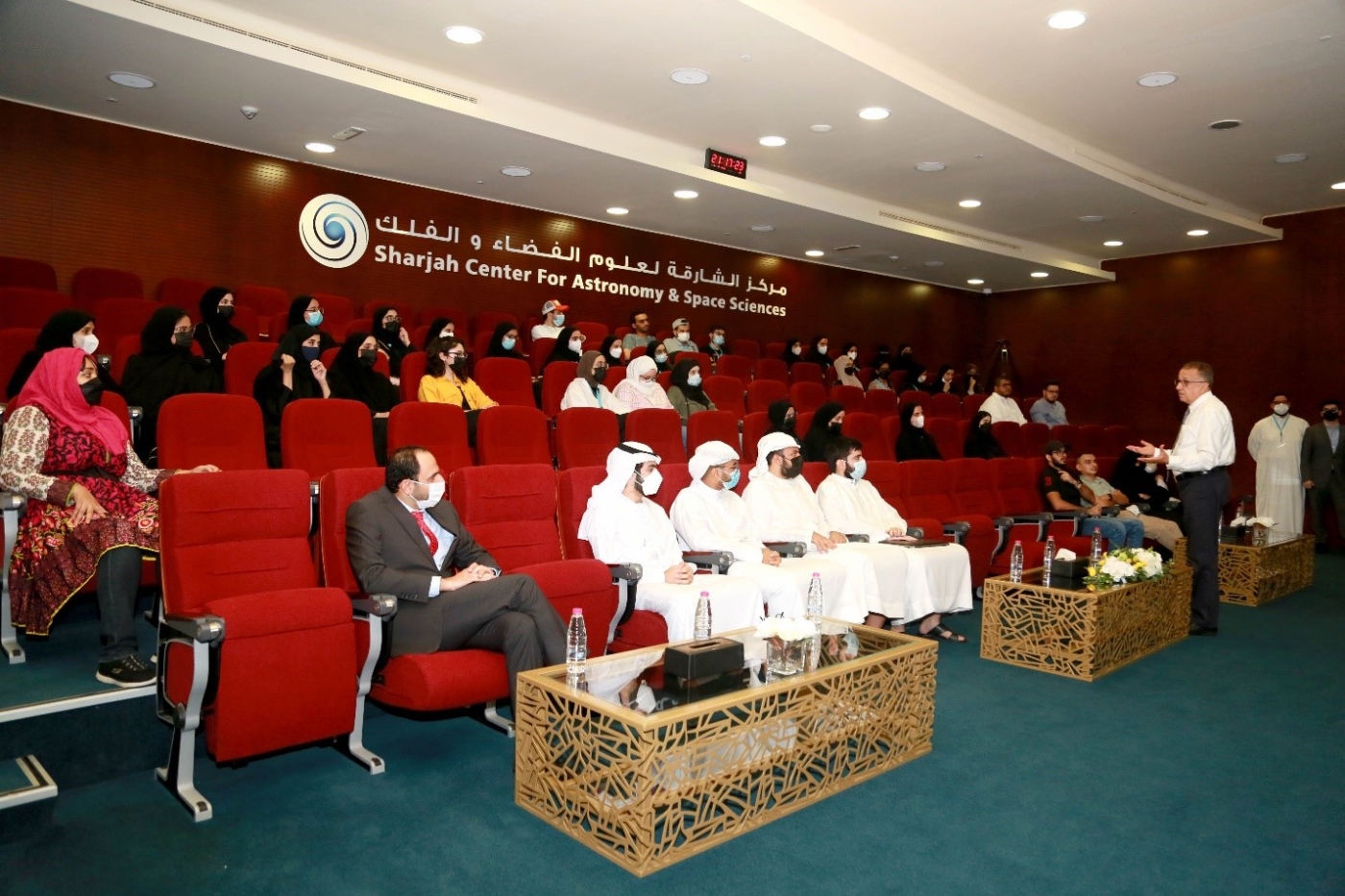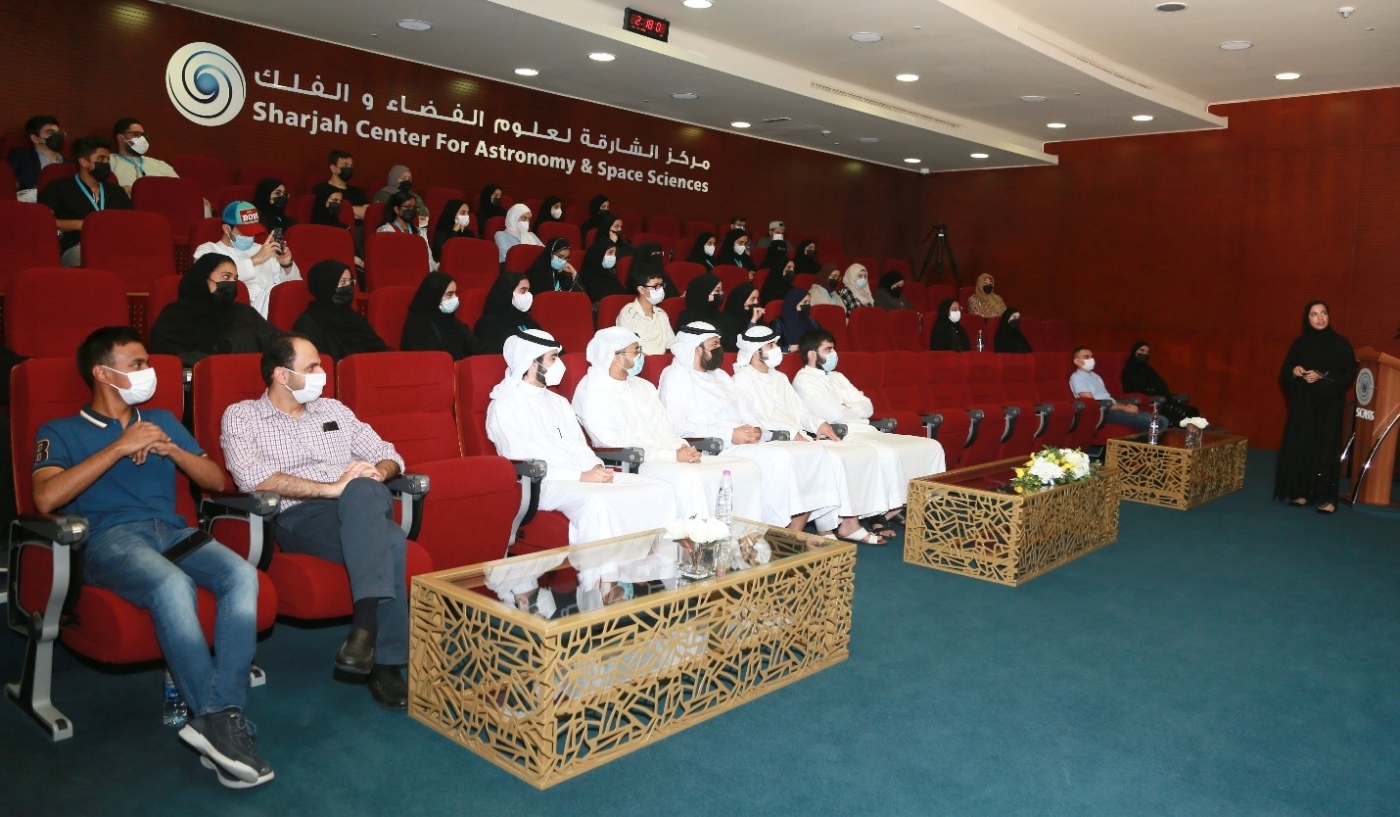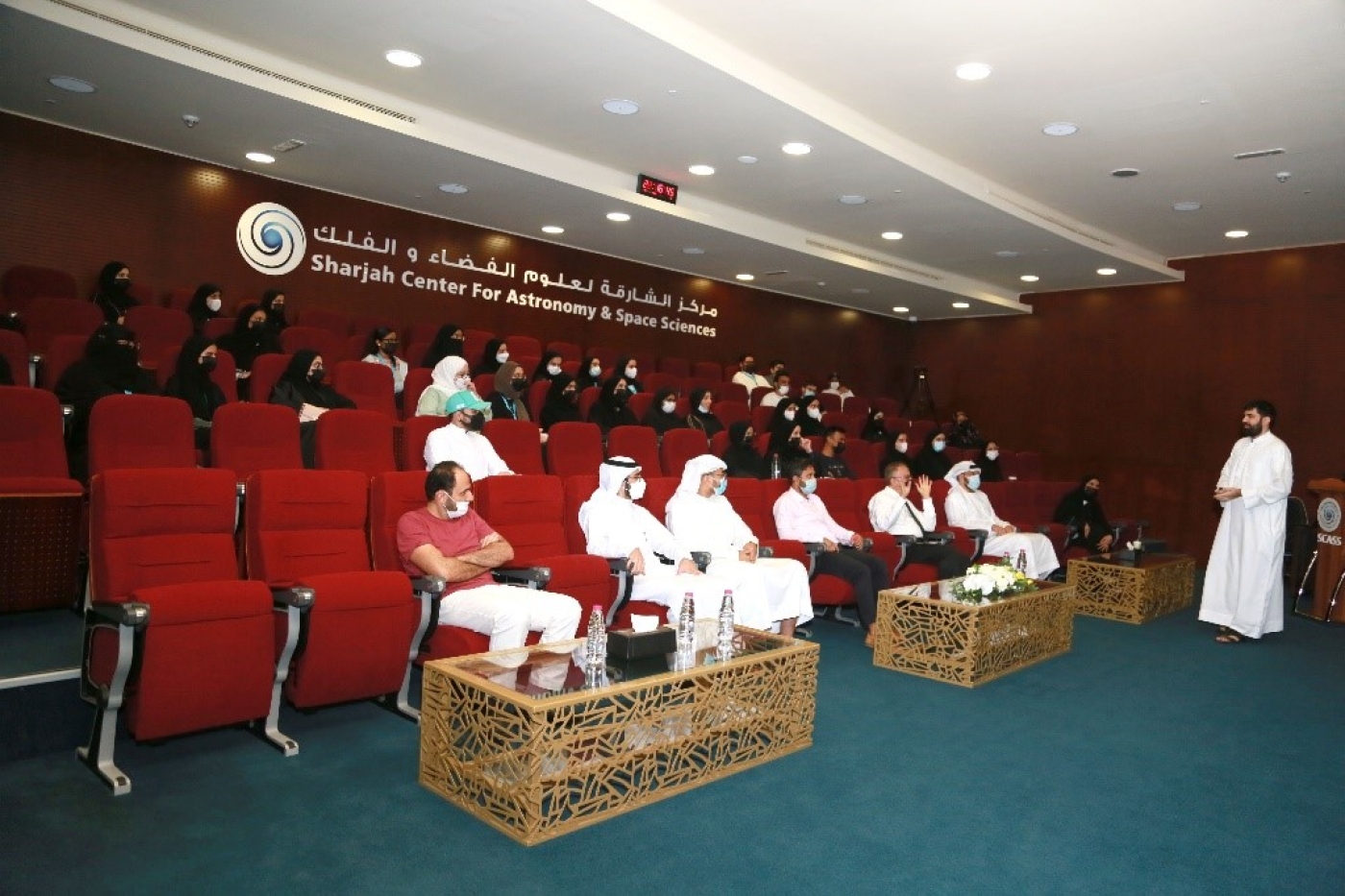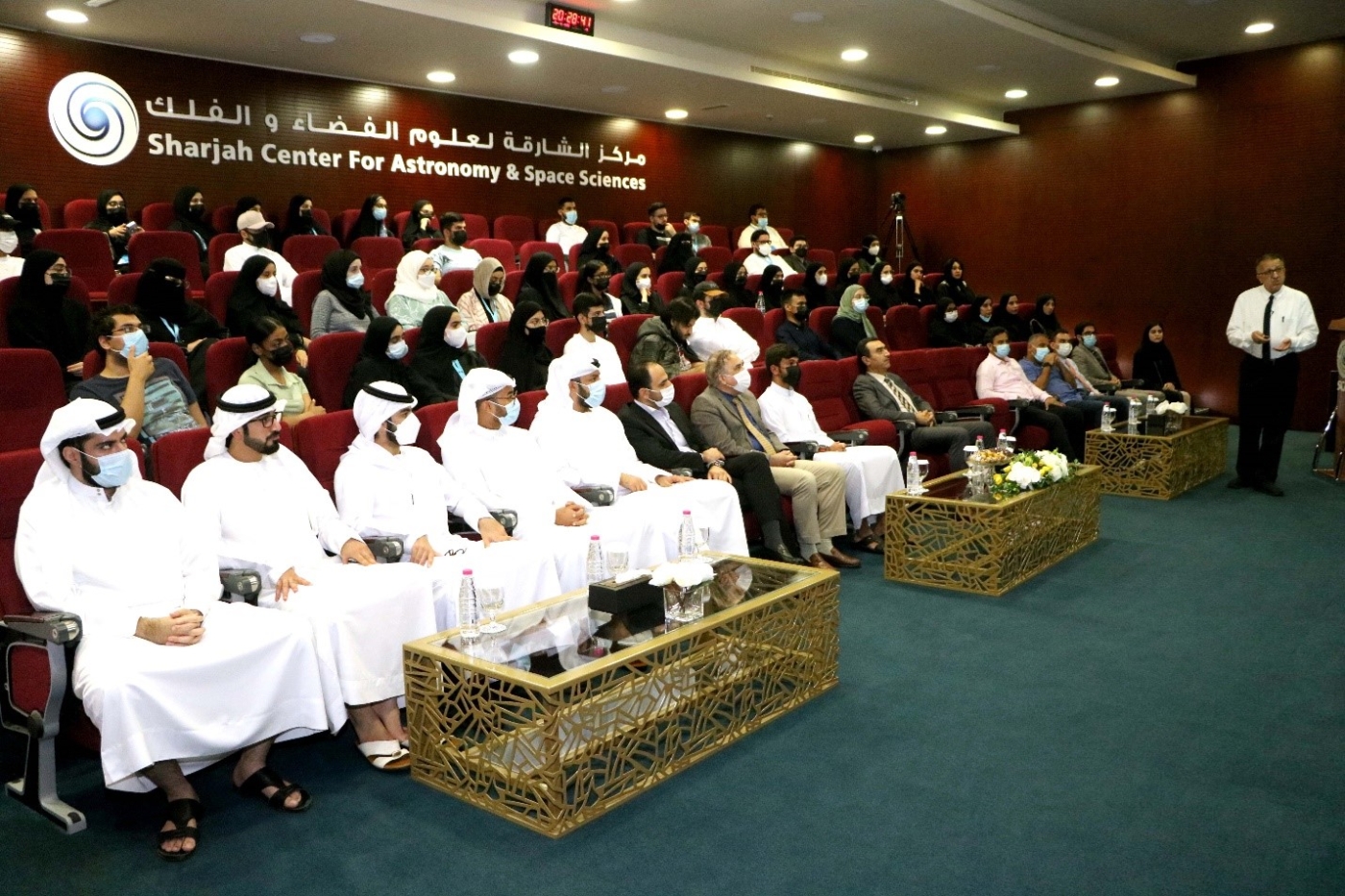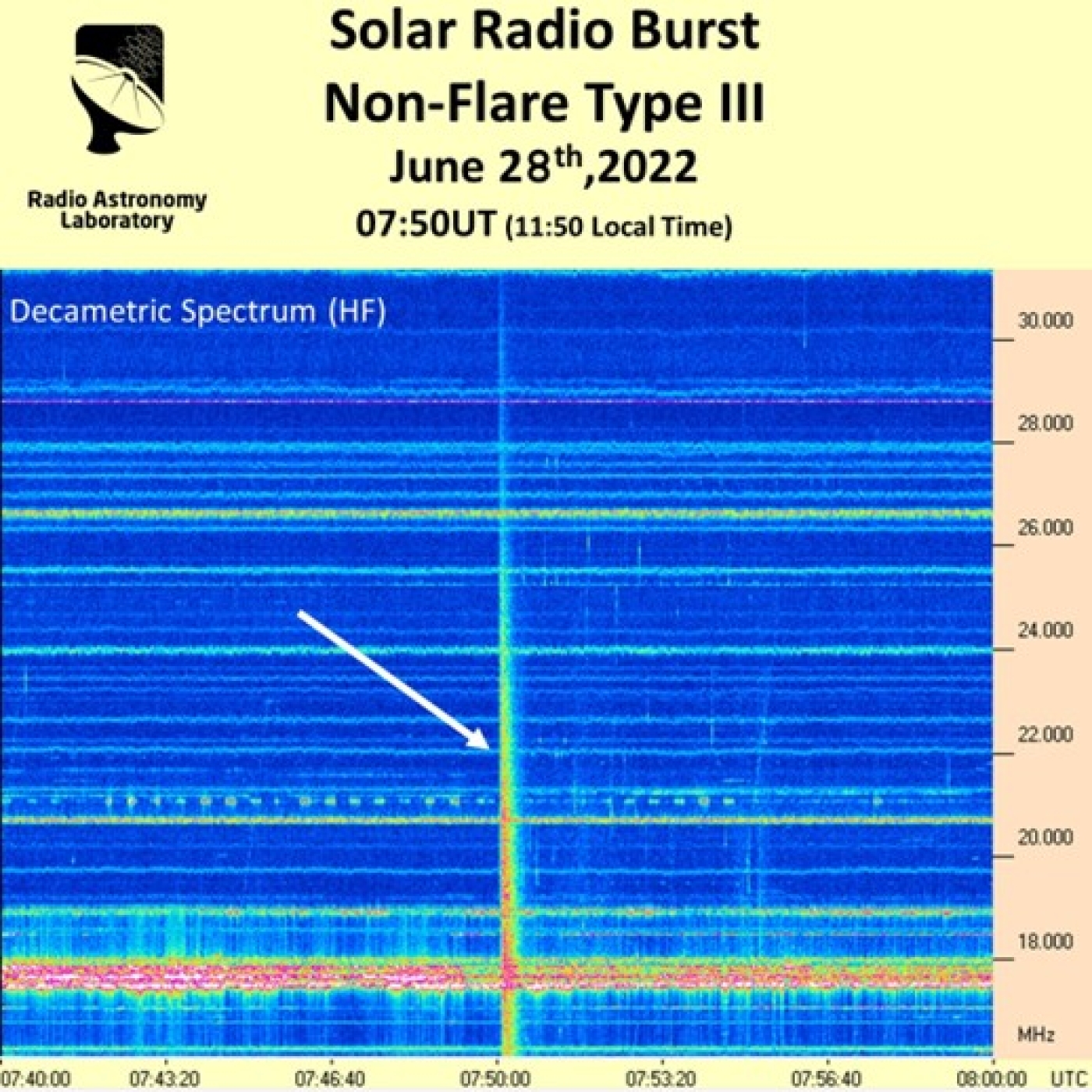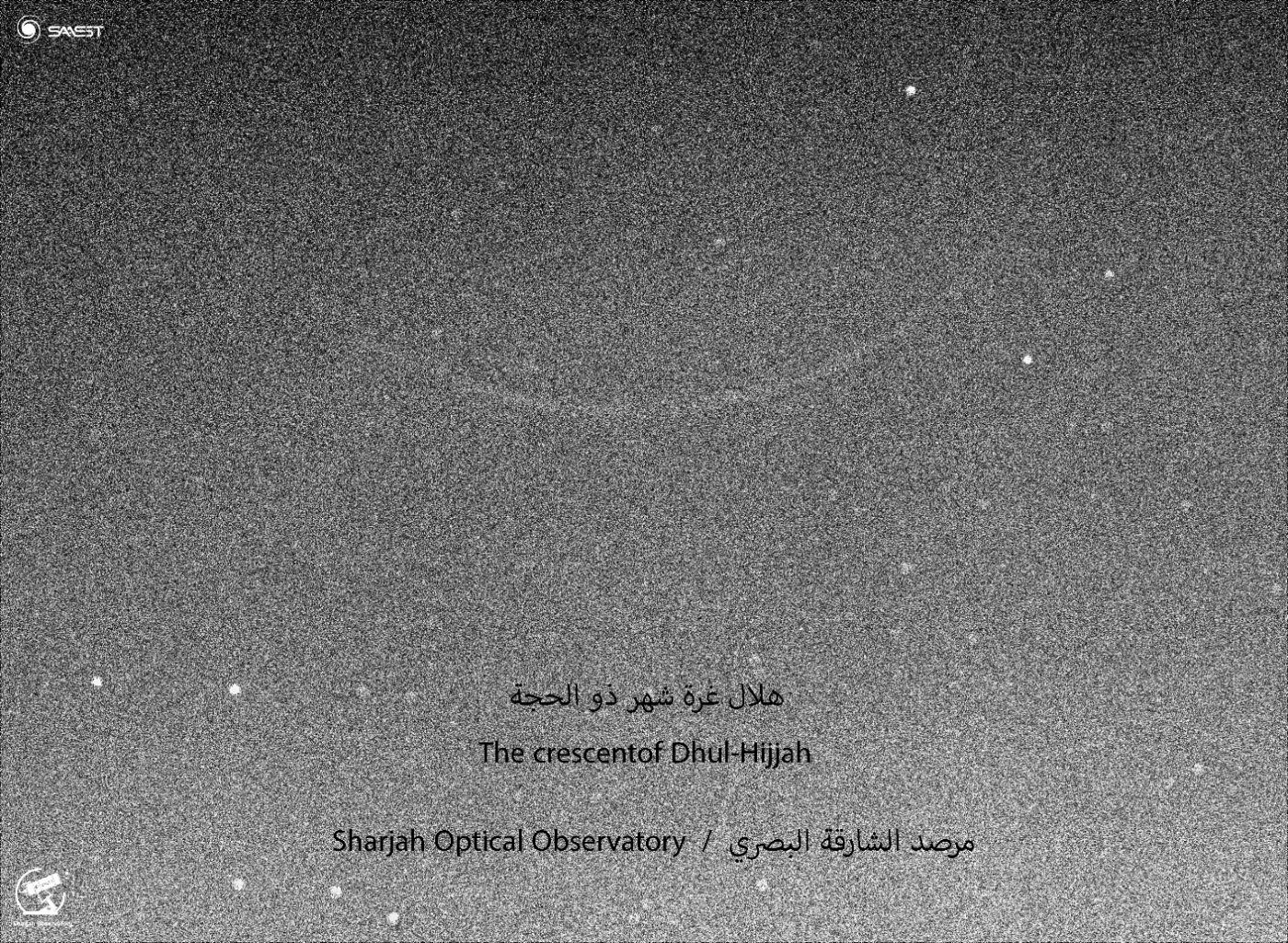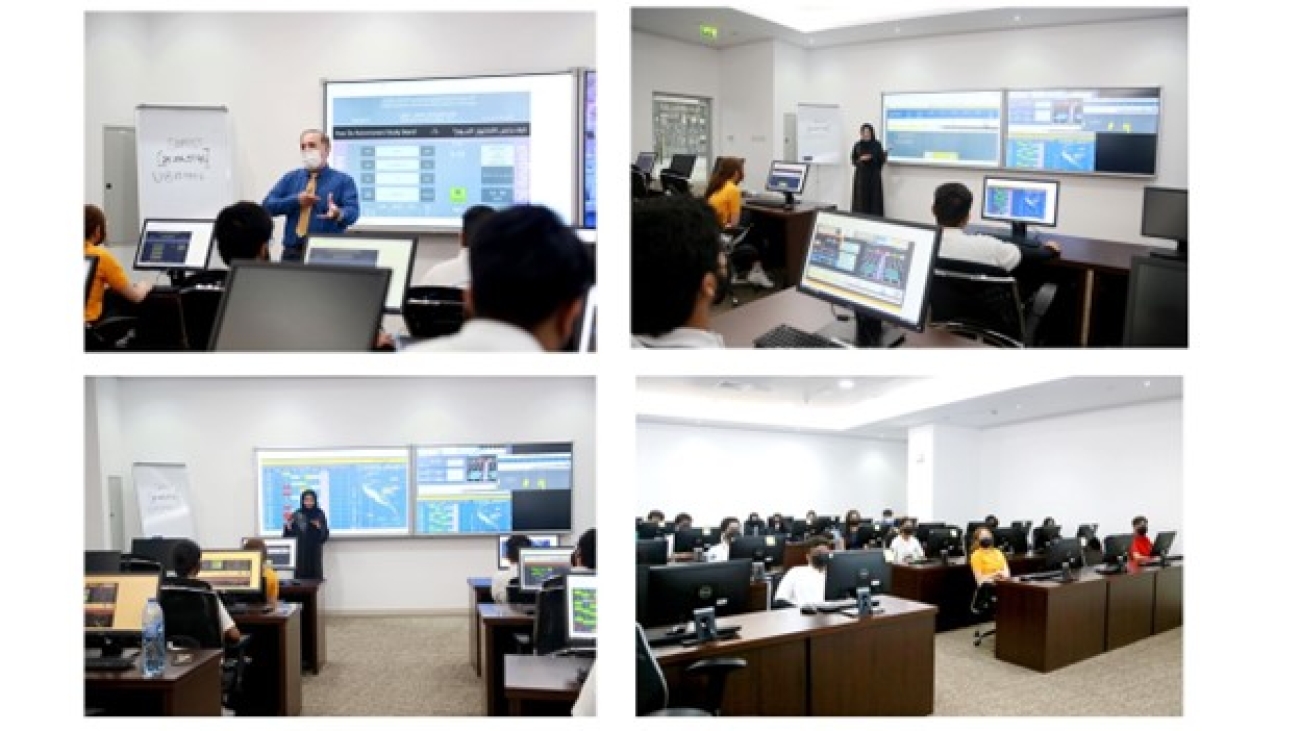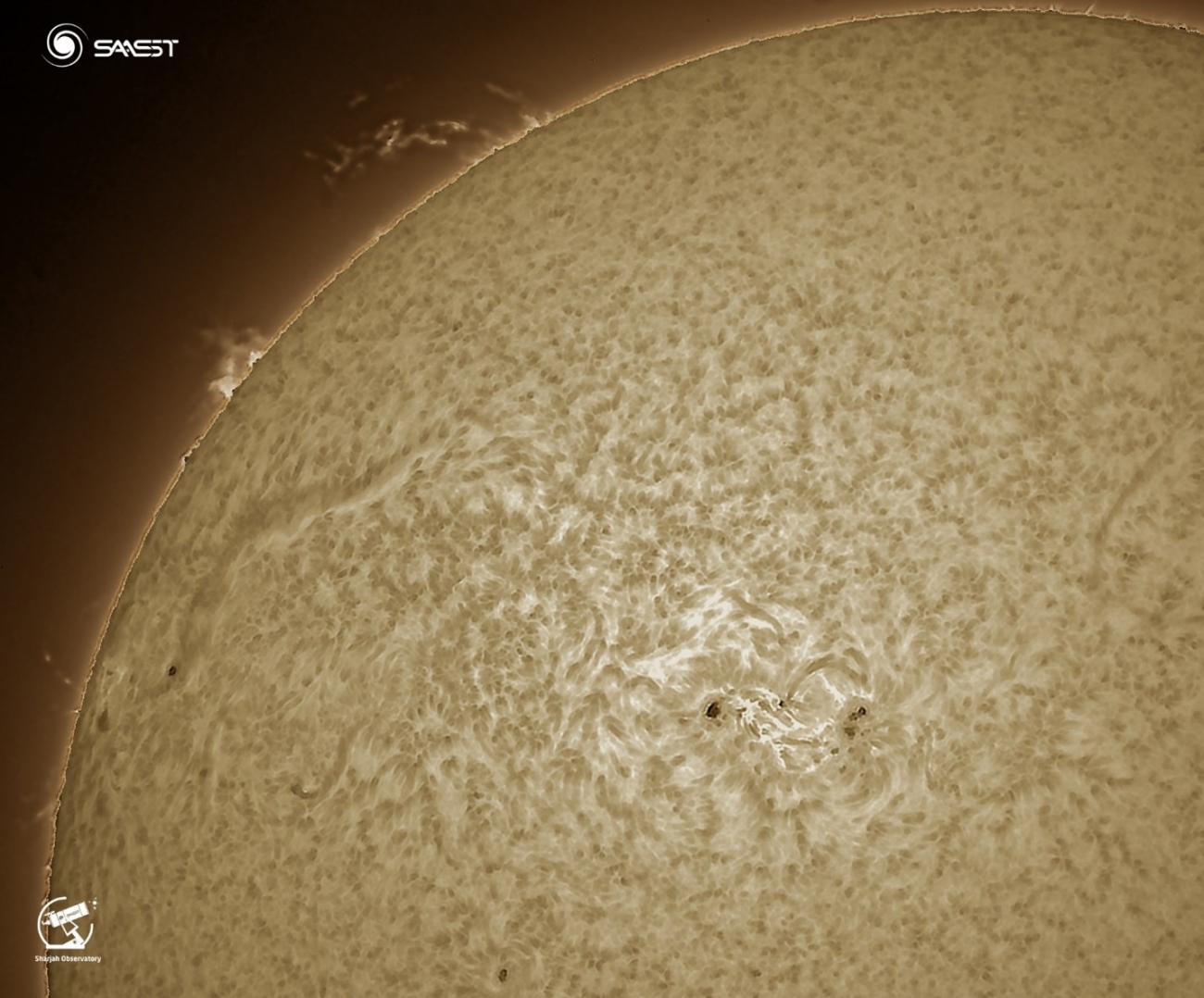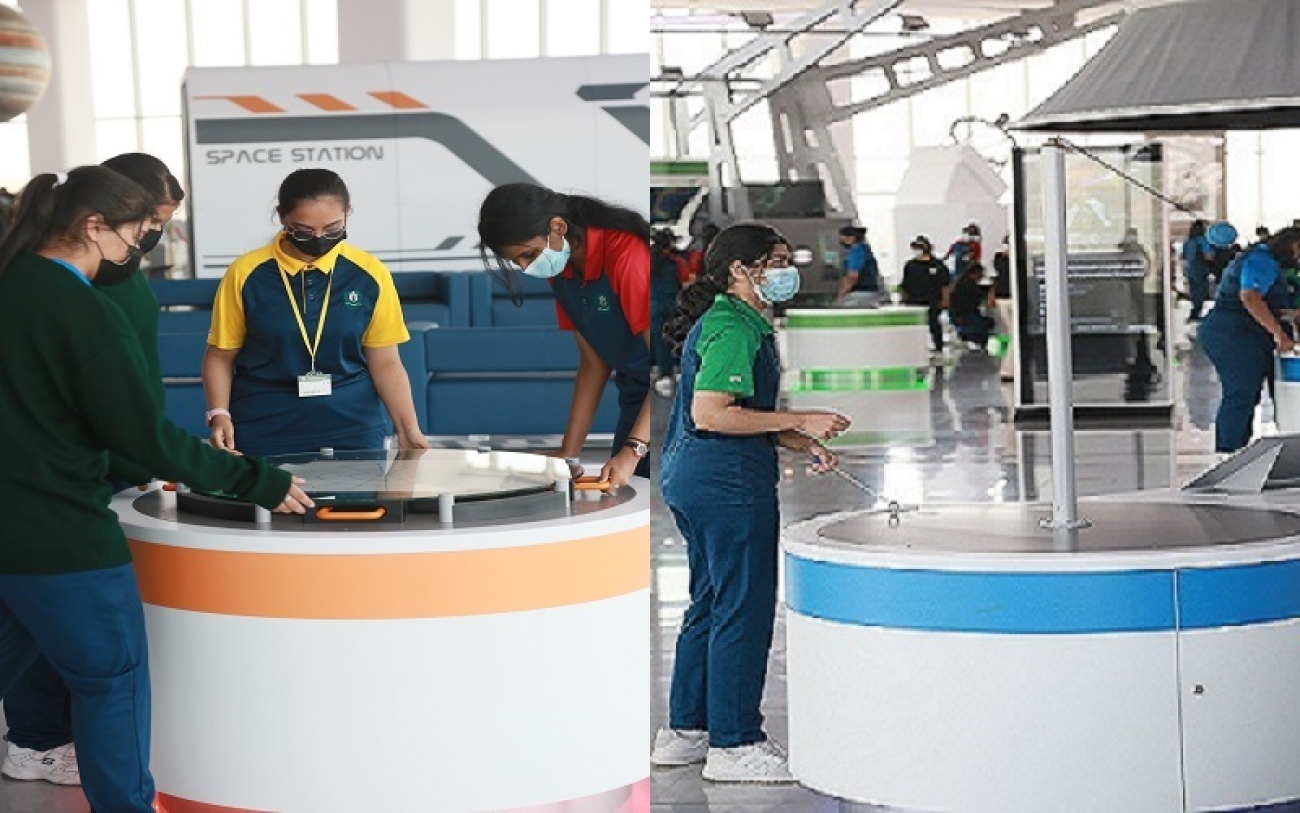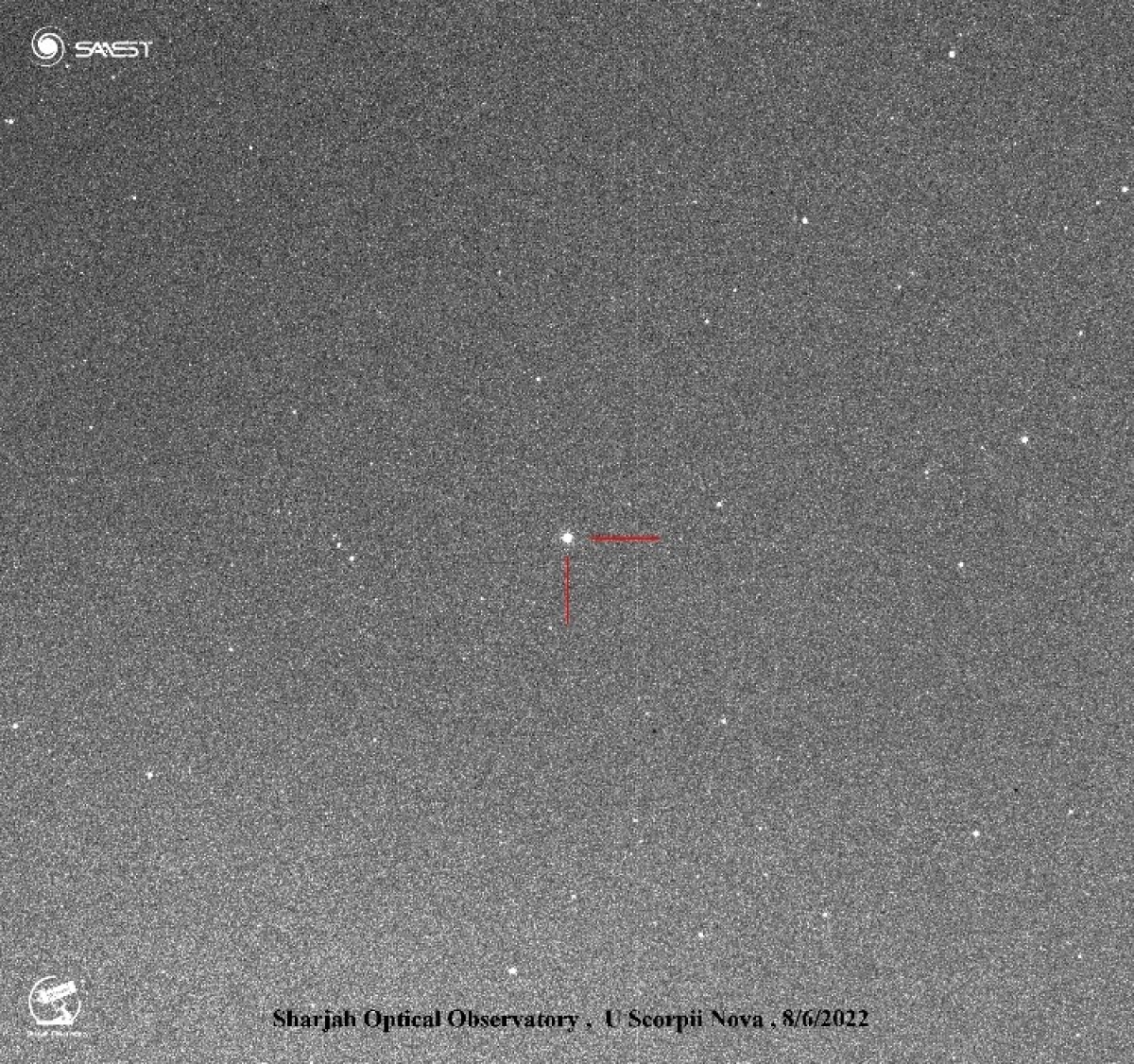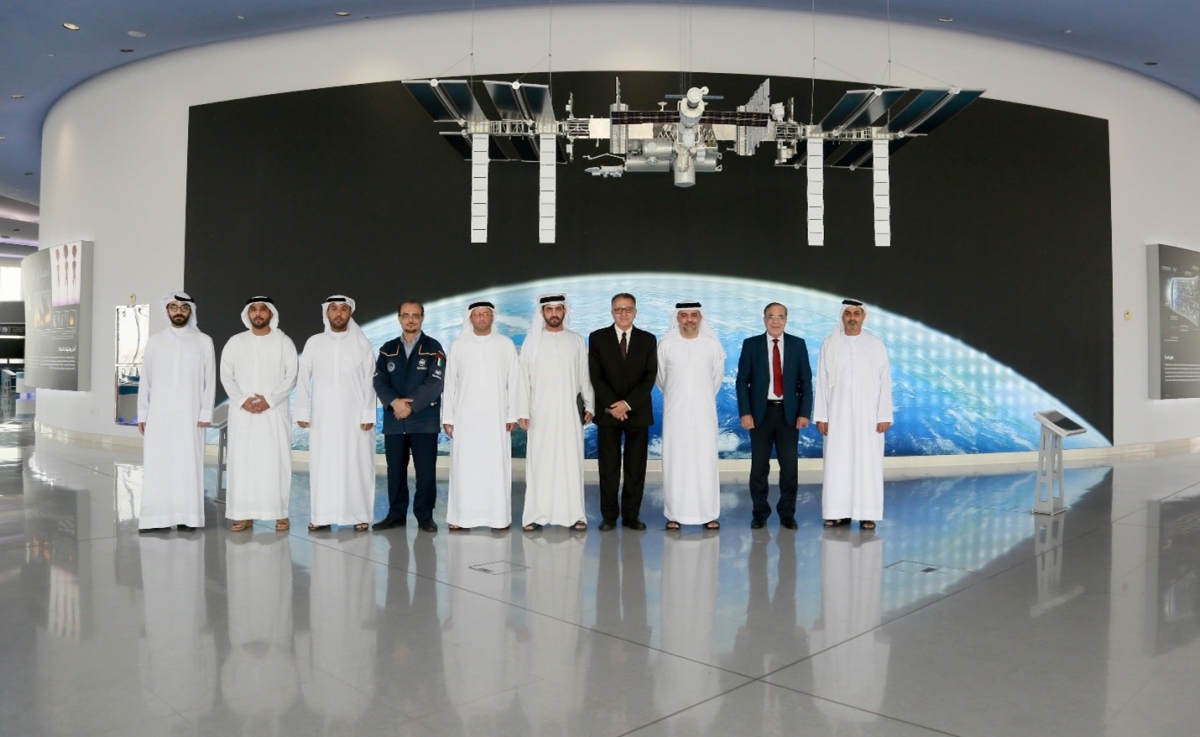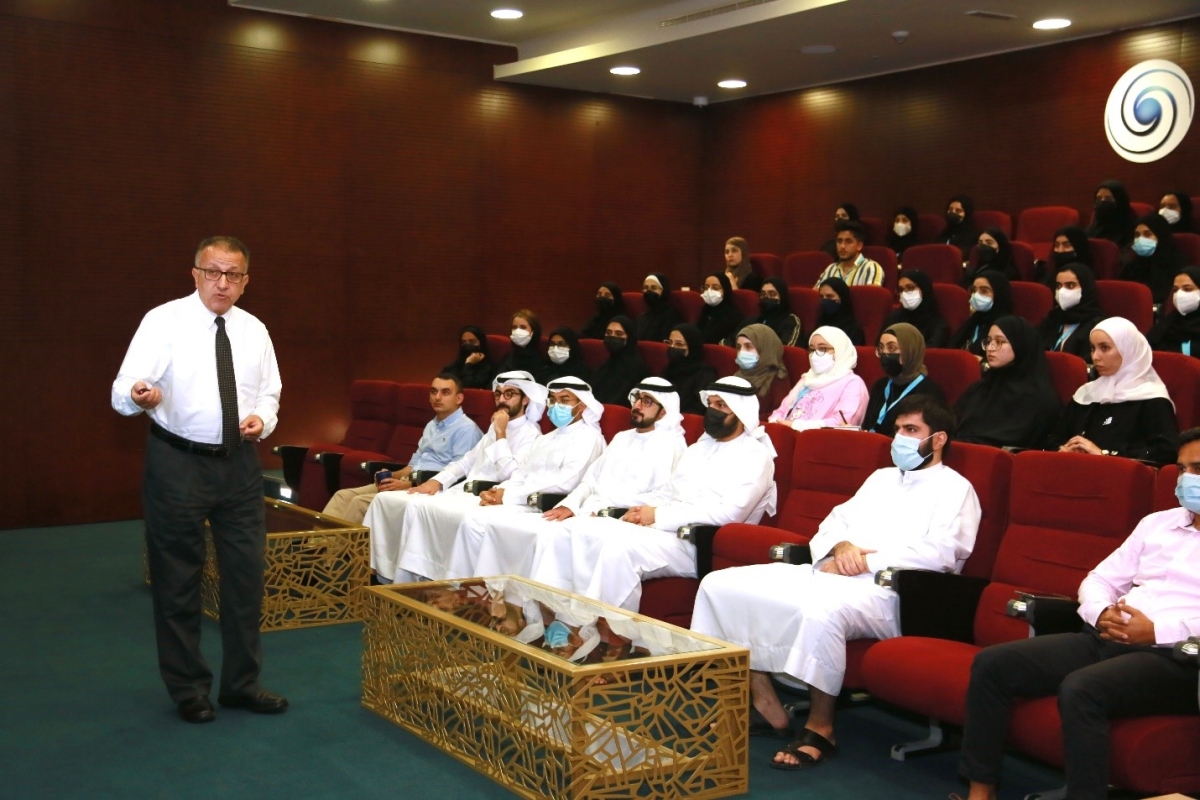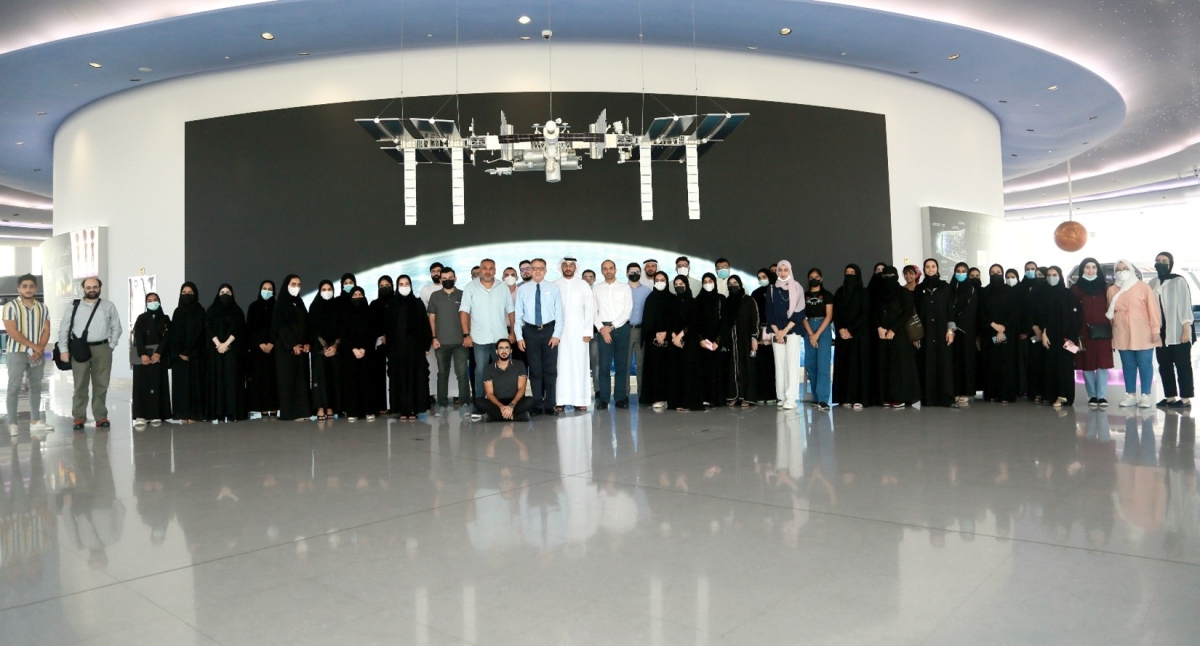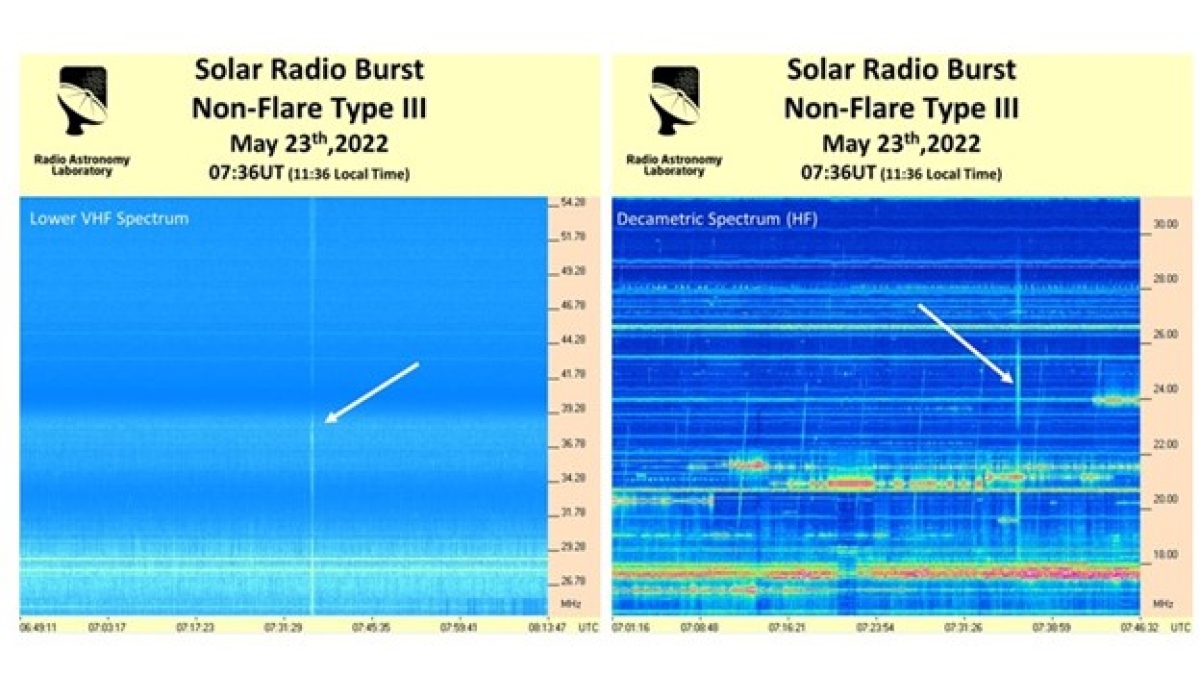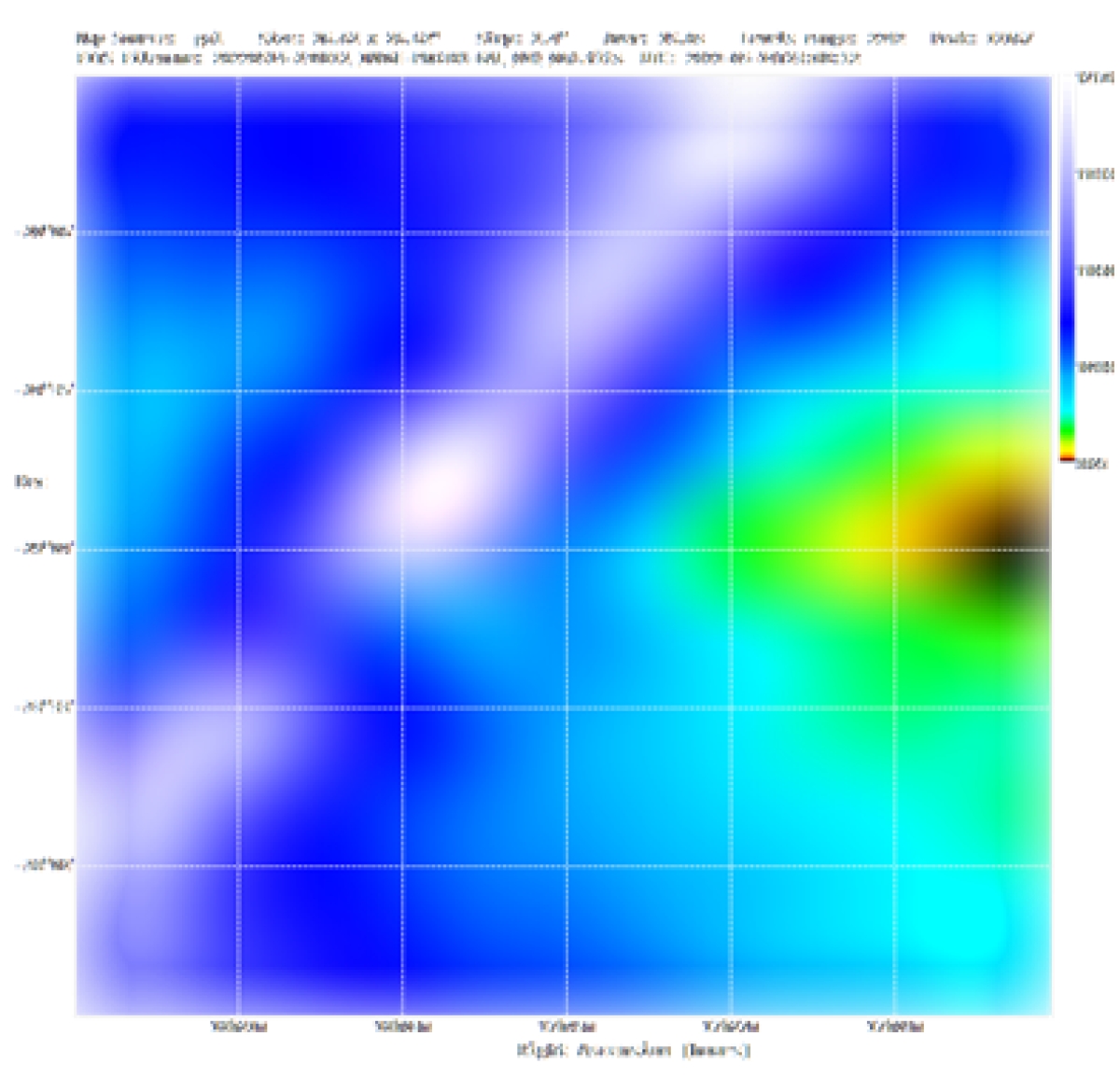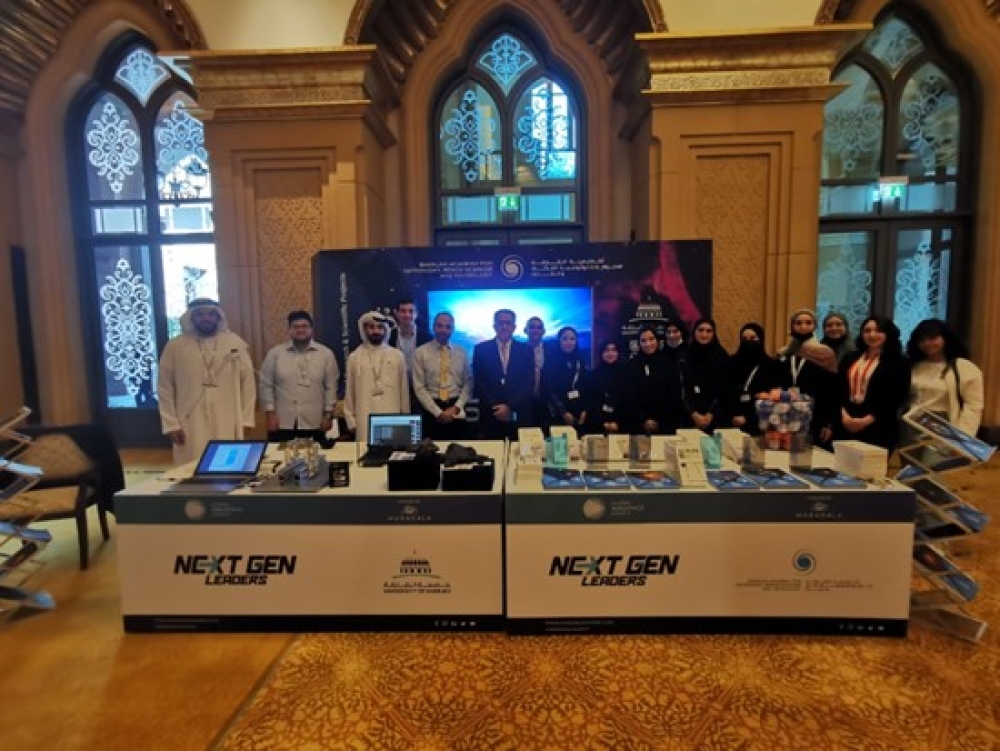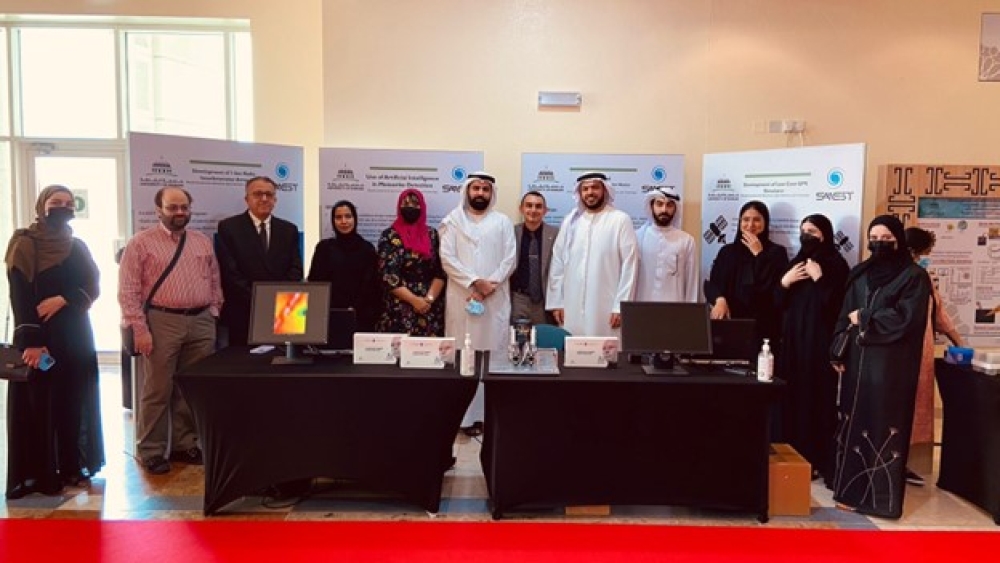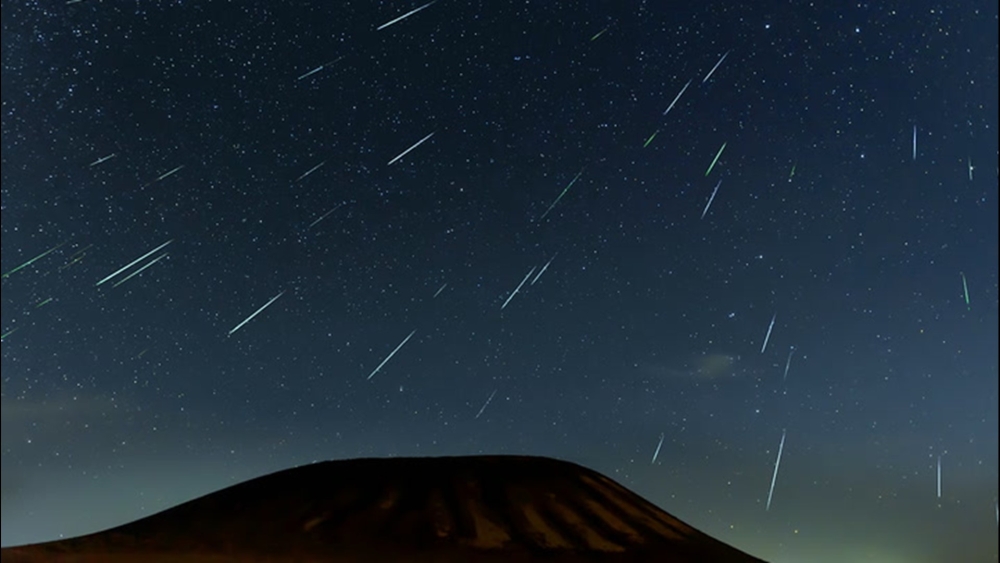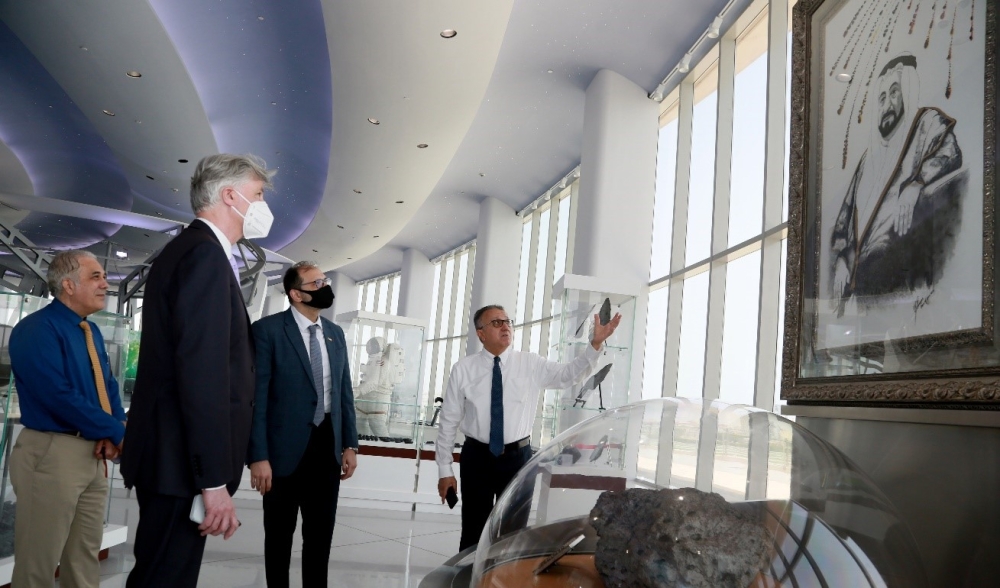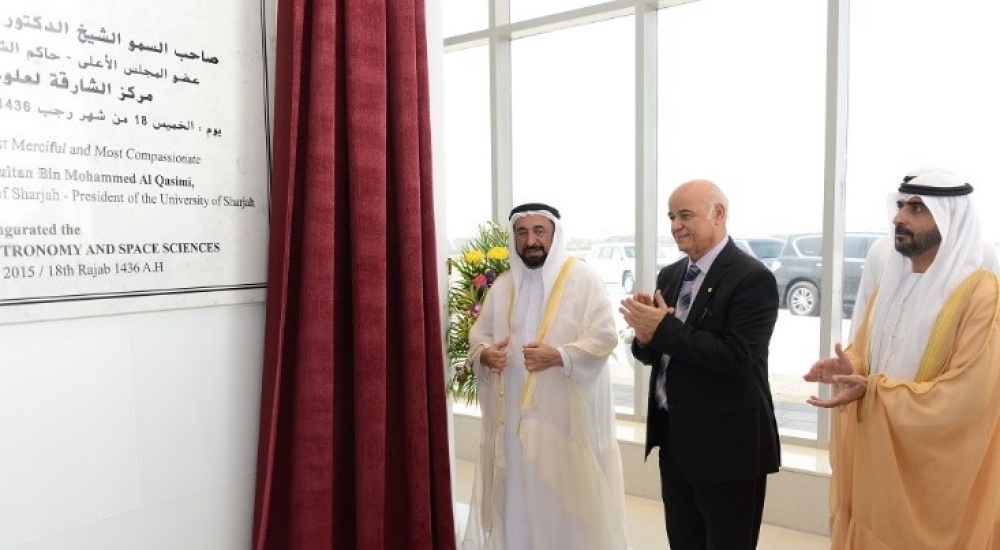
SAASST News (414)
SAASST Interns Graduation Day
After six intensive weeks of training, the first batch of internship trainees graduated from the Sharjah Academy for Astronomy, Space Sciences, and Technology’s (SAASST) summer internship program on July 07, 2022.
SAASST Holds a General Lecture Titled “AI in Space and Astronomy” Mrs. Aisha Al-Owais
The Sharjah Academy for Astronomy, Space Sciences, and Technology (SAASST) organized a general lecture titled “AI in Space and Astronomy” on July 06, 2022. The lecture by Mrs. Aisha Al-Owais, expanded on what Artificial Intelligence (AI) is, how it is used, and the future of AI.
A Brief Intro to Global Navigation Satellite Systems
On June 29, 2022, the Sharjah Academy for Astronomy, Space Sciences, and Technology (SAASST) held its 4th weekly general lecture by Abdollah Masoud Darya, a lab engineer at the Space Weather and Ionosphere Laboratory.
SAASST Hosts Event for Asteroid Day
On June 30, 2022, the Sharjah Academy for Astronomy, Space Sciences, and Technology organized a workshop for all researchers and interns to discuss the significance of Asteroid Day June 30. Prof. Ilias Fernini and other researchers discussed the importance of researching and understanding the different types of asteroids and meteorites.
A Strong Solar Radio Burst Observed by the SAASST Radio Spectrometer
There was one big sunspot AR3040 on the Sun, and many others (but with very small sizes), spread over the photosphere when the non-flare type III solar radio burst erupted at 7:50 UT (11:50 local time) on June 28th, 2022.
Observations of the Crescent of Dhu’l Hijjah on June 30, 2022
The new crescent of Dhu’l-Hijjah was observed on Thursday, June 30, 2022, using the 180 mm refractor at the SAASST Sharjah Optical Observatory (SOO) around noontime.
Workshop for "Mission X"
The Planetarium staff at the Sharjah Academy for Astronomy, Space Sciences, and Technology (SAASST) organized on June 28, 2022, a special workshop on "How Do Astronomers Study Stars." The workshop was for a dozen students participating in the "Mission-X" program in cooperation with Pristine Private School in Dubai.
A Delegation from Several US Universities Visits SAASST
The Sharjah Academy for Astronomy, Space Sciences, and Technology received on June 28, 2022, a visit from a high-profile delegation from several universities from the USA and UK: Duquesne University Pittsburgh, The New School New York City, University of St. Francis Joliet (Illinois), Xavier University Cincinnati (Ohio), Purdue Research Foundation West Lafayette (Indiana), University of Virginia, Columbia University (New York City),
Observation of the Radio Galaxy 3C 129 with SAASST 5-m Radio Telescope
3C129, a giant radio galaxy with a linear size of 0.76 Mpc, is a very large and bright head-trail galaxy. It was first mapped by Macdonald, Neville, and Ryle in 1996. The galaxy is obscured at optical wavelengths but can be observed at infrared and radio wavelengths.
Observation of A Prominent Magnetic Filament with SOO
A prominent magnetic filament was observed on the surface of the Sun on June 22, 2022, by Mr. Mohamed Talafha using the Sharjah Optical Observatory. A 105 mm solar refractor telescope equipped with an alpha hydrogen filter was used to take this snapshot picture.
SAASST Holds A General Lecture Titled “The Celestial Coordinates”
On June 15th, 2022, Sharjah Academy for Astronomy, Space Sciences, and Technology (SAASST) held a lecture titled “The Celestial Coordinates,” led by Mohammed Rihan from the Radio Astronomy lab. The lecture went into depth about how equatorial coordinate systems provide us with locations of multiple celestial objects through satellite tracking, celestial navigation, and space debris tracking.
SAASST Schools Visit is Back
The planetarium at the Sharjah Academy for Astronomy, Space Sciences, and Technology is again alive with the visit of hundreds of students from high schools. For a month, these visits have increased after the ease of the Covid-19 restrictions.
SAASST Observations of U Scorpii
This is a picture of the U Scorpii (U Sco), a recurrent nova system in the constellation of Scorpius. Mr. Mohamed Talafha took the picture at the SAASST Sharjah Optical Observatory on June 08, 2022. U Scorpii is known to be one of the ten known recurrent novae in our own Milky Way galaxy. The American Association of Variable Star Observers (AAVSO) is currently running an observing campaign on U Sco, and worldwide observers are encouraged to observe this star as often as possible.
A delegation from the Ministry of Defense Visits SAASST
The Sharjah Academy for Astronomy, Space Sciences, and Technology (SAASST) opens its doors to welcome a delegation from the UAE Ministry of Defense, led by Colonel Khaled Al-Dhaheri, on June 09, 2022. The visit detailed how goal-oriented SAASST is and its achievements that led them to become one of the leading Space Academies in the MENA Region.
SAASST Holds a Lecture on the UAE Space Exploration Program
On the 8th of June 2022, Prof. Ilias Fernini, Deputy General Director for Research, held a weekly general lecture at the Sharjah Academy for Astronomy, Space Sciences, and Technology (SAASST). During the hour-long Lecture, Prof. Ilias Fernini talked about the UAE Space Exploration Program, an initiative aiming to broaden the knowledge of the country’s contribution to the space sector.
SAASST Receives 35 Students for an 8-weeks internship
Prof. Ilias Fernini, the Deputy-General Director for Research at the Sharjah Academy for Astronomy, Space Sciences, and Technology, held a lecture for the newly appointed 35 interns to introduce them to the Academy.
SAASST Solar Radio Spectrogram Observes a Non-flare Flash Solar Radio Burst
Despite the solar disk being filled with sunspots, no solar flares or CMEs were observed from the Sun on Monday, 23rd May 2022. For two days, the Sun had been quiet when this silence was suddenly cut with a non-flare Type III radio burst.
SAASST 5-m Radio Telescope Observes the Disk of the Milky Way at 1.4 GHz
The Milky Way is visible from Earth as a hazy band of white light, some 30° wide, arching the night sky. The light originates from the accumulation of unresolved stars and other material located in the direction of the galactic plane. Dark regions within the band are areas where interstellar dust blocks light from distant stars. The sky area that the Milky Way obscures is called the zone of avoidance.
More...
SAASST Participates in the Global Aerospace Summit
The Sharjah Academy for Astronomy, Space Sciences, and Technology (SAASST) participated in the Global Aerospace Summit in Abu-Dhabi between May 24-26, 2022. It was an occasion for SAASST to present its new research projects to the international and national aerospace community. It was also an opportunity to highlight the academy's role in promoting space sciences research in the United Arab Emirates and the MENA world. SAASST presented several new research projects in different areas: radio astronomy, GNSS, artificial intelligence, CubeSat technology, and Martian Aurora.
SAASST Participation in the 14th University of Sharjah Research Forum
The Sharjah Academy for Astronomy, Space Sciences, and Technology (SAASST) participated in the University of Sharjah 14th Research Forum on May 18, 2022. As a result, SAASST presented four new research projects. This is part of SAASST's constant strive to be in front of the research vision of the United Arab Emirates. The four projects cover four key areas of research: radio astronomy, GNSS, artificial intelligence, and CubeSat technology:
UAEMMN Observation Report: Aquariids Meteor Shower Peak-2022
The UAE Meteor Monitoring Network (UAEMMN) observed 41 meteors during the Aquariids peak on the 4th and 5th May 2022. The histogram below illustrates the number of observations of meteors over four days, starting from the 3rd to the 6th of May. The detection rate increased by nine meteors between the 3rd and 4th, indicating the start or higher activity. On the 5th, it went up by 11 observations, with 26 meteors observed that night. However, by the early morning of the 5th, the observations dropped by 17 as the peak of the Aquariids shower had passed. Therefore, our data indicate that the Aquariids peak nights were on the 4th and 5th of May. On the 4th of May, the Moon phase was a waning crescent, only 2.97 days old with 10.99% sky illumination, rising at 7:57 and setting at 22:11, leading the UAEMMN system to have a beautiful dark canvas to observe through.
SAASST Visitors
During the week of May 09-12, 2022, the Sharjah Academy for Astronomy, Space Sciences, and Technology has received several highly distinguished visitors from England and Germany:
SAASST Celebrates its 7th Anniversary on May 07
The concept of the Academy first began as an initiative that HE Prof. Hamid Al-Naimiy, Chancellor of the University of Sharjah and Director General of the Sharjah Center for Astronomy and Space Sciences (SCASS), presented to His Highness Sheikh Dr. Sultan Bin Mohammed Al Qasimi, Member of the Supreme Council, Ruler of Sharjah, and former President of the University of Sharjah. As a result, his Highness provided Prof. Hamid the full authority to proceed forward with developing its infrastructure and directed the provision of the financial resources necessary. Through negotiations with international and local companies specializing in planetarium, the Sharjah Planetarium was constructed along with the exhibition halls and the optical astronomical observatory.
SAASST Lyrids Meteor Shower Observations
The UAE Meteor Monitoring Network (UAEMMN) observed 38 meteors during the Lyrids peak period from the 22nd until the 23rd of April 2022. There was an increase in meteor observation from April 22 to 24. The total number of meteors observed was 12, 22, 16, and 9 on April 21, 22, 23, and 24, respectively. The UAEMMN data indicates that the peak nights were the 22nd and 23rd of April.



